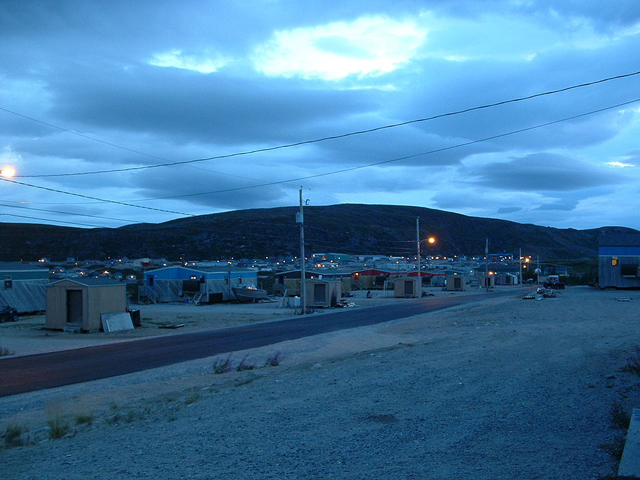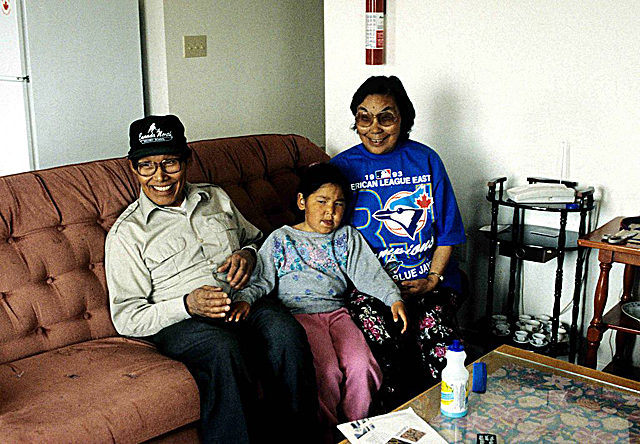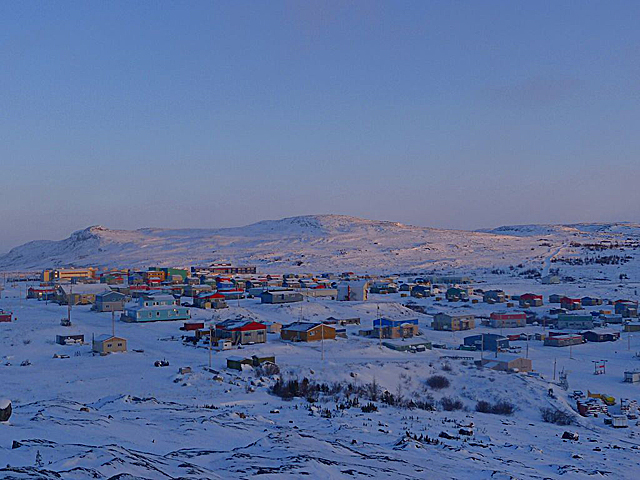Kangiqsualujjuaq, an Inuit village of 900 people, has the highest rate of children living in foster care of any place in Nunavik. The mayor and the other leaders decided to do something to address this dismal fact about their community.

According to an article in the CBC last week, Hilda Snowball, the mayor of Kangiqsualujjuaq, which is located in the Kativik Region of northern Quebec, was stunned four years ago when she learned that 27 children—babies, toddlers, and older kids—had been taken away from their families under the provisions of the Youth Protection Act of Quebec and put into foster care elsewhere. She told the CBC that it was heartbreaking news. “As Inuit we share, we work together—and when something happens, we try to fix it as families,” she said.
She recognized that the children were in unsafe conditions in their homes, but she felt that taking them away from their parents was more harmful than helpful for them. She and several other women in the community decided to do something. At the beginning of 2016, they opened a special facility to address the problem in Kangiqsualujjuaq, calling it the Qarmaapik Family House. A qarmaapik is the Inuktitut word for the large canvas tents that the Inuit used to use for summer housing when they lived out on the land.

Ella Annanack, the co-coordinator of the home, told the CBC that one of the problems in Kangiqsualujjuaq is that some young people become parents when they are quite young, and they need to learn “healthy parenting.” The 24-year old woman believes that Inuit should solve their problems within their own families, as their ancestors used to do.
One of the programs at the new facility is cooking classes, offered twice a week. When the parents come for an evening of cooking, a daycare worker takes care of their children in a separate play room. Another program is counseling for parents who need it.
Qarmaapik Family House also works with the parents, mostly the mothers, to make baby books—scrapbooks that they can give to their children when they get older. The scrapbooks include descriptions of the physical characteristics of their children, the origins of their names, and genealogical information. Ms. Annanack said that making the scrapbooks prompts the parents to think more about their kids and to form better bonds with them.

The building also has four bedrooms at the back where children can be housed if their families are intoxicated, fighting, or in some other form of crisis. The goal is to try and keep families together as much as possible, so the kids can stay in the village and not be put in foster care, which may be far away.
Mayor Snowball told the CBC that separating the children from their parents can be devastating to them. At times she witnesses the emotions when the children who’ve been placed in foster care are allowed to fly back to Kangiqsualujjuaq. “Children are happy when they finally see their families, and [when] the time comes … to leave, it’s heartbreaking to see them.”
She said that the children deeply miss the affection of their parents. They cry because they want to stay in the community with them. “But they are forced to leave, because they are in the foster care system,” Ms. Snowball concluded. Of the 900 residents of Kangiqsualujjuaq, about 400 are children.

The project appears, from the news report, to represent a new ray of hope for Kangiqsualujjuaq, like the dawn of a new day in the town. The Nunavik Board of Health and Social Services provided $183,000 to help the community renovate a building which had previously been a store, a restaurant, and a bed and breakfast.
The attorney for the village is working with the director of youth protection for the province to find ways for more of their children to stay in the community—within the parameters of the provincial Youth Protection Act.